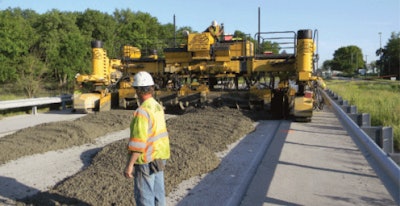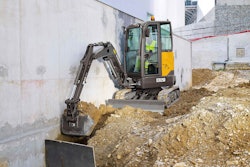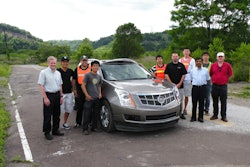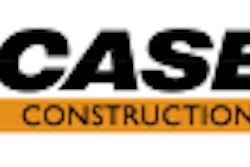
By Gerald F. Voigt, P.E., president and CEO, American Concrete Pavement Association, Rosemont, Illinois
Concrete overlays are getting thin enough today that they are becoming an option for preserving pavements. Through advances in science and technology, concrete overlays are also a resurfacing method, not just a structural component. As overlays are used by agencies for functional pavement improvement and continue to thin toward 2 inches, they begin to fit into a roadway preservation strategy.
The evolution to thinner concrete overlays is a result of a better understanding of bond, shorter joint spacing, reliable design methodologies and improved fiber technology. These changes mean concrete overlay technology today goes beyond the traditional roles of construction or structural rehabilitation. Therefore, agencies can be more nimble and work within budgetary constraints.
Brief History
Concrete overlays date back to the early 1900s and were proven in large numbers on county roads and parking lots in the early 1980s. Many of those projects helped the industry get comfortable with overlays. The technology spread across the country through collaborative efforts that were similar to today’s crowd sourcing methods.
In the 1990s, the focus with our agency partners went beyond overlays on concrete to include overlays on asphalt pavements. Today, 60 percent of concrete overlays are on top of asphalt pavements. The acceptance and use of concrete overlays has increased steadily, and for a variety of reasons – largely related to pricing factors, research and testing, outreach, tech transfer, education and the successful placement of high-quality overlays.
Our version of crowdsourcing has been inclusive and has involved industry organizations — including the American Concrete Pavement Association (ACPA), the National Concrete Pavement Technology Center, International Grooving & Grinding Association (IGGA) and affiliated chapter/state paving associations — along with the Federal Highway Administration (FHWA), state transportation agencies and academia.
It is also worth noting a number of researchers, along with the accelerated load-testing facility at the FHWA’s Turner-Fairbank Highway Research Center and the Minnesota Department of Transportation’s (DOT) Minnesota Road facility were instrumental in validating the use of concrete overlays for highway applications.
Concrete overlays also have been used successfully in airport facilities, streets/roadways and industrial facilities. This acceptance and increased use seemed to happen at an almost even pace in all types of applications.
Concrete Over Asphalt
For a number of reasons, the majority of concrete overlays are placed over existing asphalt roads. Contributing factors include the price volatility of asphaltic oil, which is tied directly to crude oil prices. The cost of asphalt has risen dramatically compared to the cost of concrete, so the competition is much closer these days. Concrete often is selected on a first-cost basis without even considering lifecycle benefits.
We also are hearing the increased use of coker equipment at oil refineries is having an effect on the supply of asphaltic oil. As we understand it, the petrochemical companies are producing higher-yield fuels and industrial products, leaving less of the residual materials such as asphalt oil.
We believe another factor, which will become even more prevalent, is the growing awareness and demand for sustainable construction. Sustainability research, particularly that which evaluates the pavements’ lifecycle, shows concrete pavements require less fossil fuel to place. Given concrete’s low- to no-maintenance requirements, those savings are even greater during a period of time because the driving surface does not have to be repaired and maintained continually.
There is research to support other sustainability features of concrete, including albedo (light reflectance), reduced motor fuel requirements due to lower rolling resistance, the greater acceptance and increased use of fly-ash and slag as secondary and ternary cementitious materials and other features that favor the use of concrete to meet sustainability requirements.
Most of the concrete overlays today, particularly bonded concrete on asphalt, are in the range of 4 to 6 inches. Thicker overlays are also commonplace, and it is not uncommon to see overlays that are 8 inches thick or thicker, particularly in heavy-highway and airport pavement applications.
Still, there is growing interest in thinner overlays. One example is a 2-inch, bonded concrete-on-concrete overlay on Interstate 35 at the Interstate 435 interchange at Lenexa, Kansas.
Improved Technology
Many years ago, when we talked about evolving concrete overlays to what we’re seeing now, we talked about the need to create better bonds and shorter joint spacing. That made a big difference as we engineered shorter joint spacing to facilitate thinner slabs. This removed one of the key failure criteria, so the science has led us to doing shorter panels in the range of 5 to 7 feet, depending on the configuration. Even panels as short as 2 feet were evaluated but found not to be effective. Therefore, with 5- to 7-foot panels, you have only one load per slab and an effective pavement.
The original design equations for concrete overlays came from the U.S. Army Corps of Engineers’ research. Before that, most overlays were placed using engineering judgment and experience.
The ACPA has added concrete overlay designs to its newest generation of pavement design software, StreetPave 12. The software can be used for all six types (bonded on asphalt, unbonded on asphalt, bonded on concrete, unbonded on concrete, bonded on composite and unbonded on composite). It accounts for the benefits of fibers, as well, which is another technological advancement that plays an important role in “thinning up” overlays.
ACPA’s Bonded Concrete Over Asphalt (BCOA) calculator is also a great resource that designers and others can use for thickness design. This web-based tool (apps.acpa.org) is based primarily on the results of FHWA-ICT-08-016, “Design and Concrete Material Requirements for Ultra-Thin Whitetopping,” a research project conducted in cooperation with the Illinois Center for Transportation (ICT) at the University of Illinois, the Illinois Department of Transportation (IDOT) and the FHWA.
Also, HIPERPAV (high-performance concrete paving) software is a key to the successful design and construction of bonded concrete overlays. The software tool is used to determine the early age behavior of bonded concrete overlays, as well as jointed – and continuously reinforced concrete pavements.
Fibers, and particularly the blend of microfibers and structural fibers, also have a profound effect on the construction of concrete overlays, especially as they get thinner. They provide toughness, help reduce plastic shrinkage cracking potential and offer greater latitude with curing. They extend the fatigue factor of the concrete because the fibers hold cracks, and they contribute to the preservation benefit we are looking for with thinner and pavements.
Many other factors will continue to contribute to thinner concrete overlays, but it’s safe to say the needs of the marketplace will drive innovation as we strive for thinner concrete overlays to meet performance and cost expectations.













